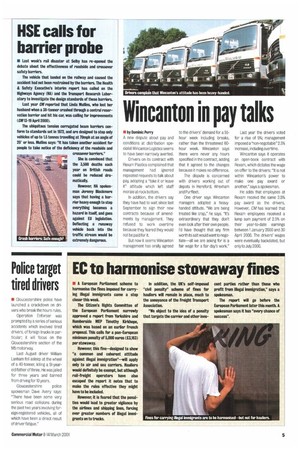HSE calls for barrier probe
Page 7

If you've noticed an error in this article please click here to report it so we can fix it.
I Last week's rail disaster at Selby has re-opened the debate about the effectiveness of roadside and crossover safety barriers.
The vehicle that landed on the railway and caused the accident had not been restrained by the barriers. The Health & Safety Executive's interim report has called on the Highways Agency (HA) and the Transport Research Laboratory to investigate the design standards of these barriers.
Last year CM reported that Linda Mullins, who lost her husband when a 38-tonner crashed through a central reservation barrier and hit his ear, was calling for improvements (CM13-19 April 2000).
The ubiquitous tension corrugated beam barriers conform to standards set in 1972, and are designed to stop only vehicles of up to 1.5 tonnes travelling at 70mph at an angle of 20' or less. Mullins says: "It has taken another accident for people to take notice of the deficiency of the roadside and crossover barriers."
She is convinced that the 3,500 deaths each year on British roads could be reduced dramatically.
However, HA spokesman Jeremy Blackmore says that having a barrier heavy enough to stop everything becomes a hazard in itself, and goes against EU legislation. Deflecting a runaway vehicle back into the traffic stream would be extremely dangerous.
































































































